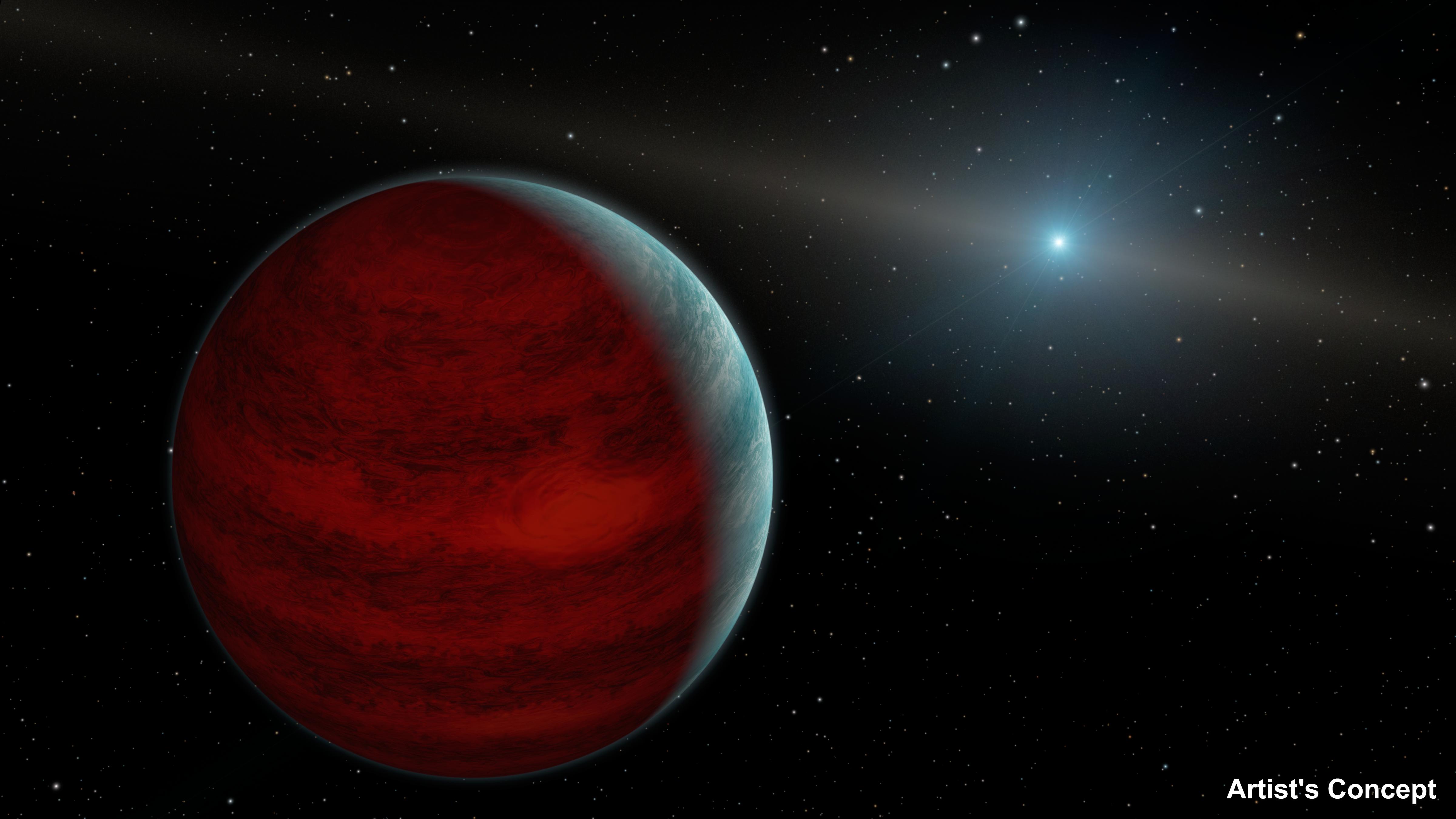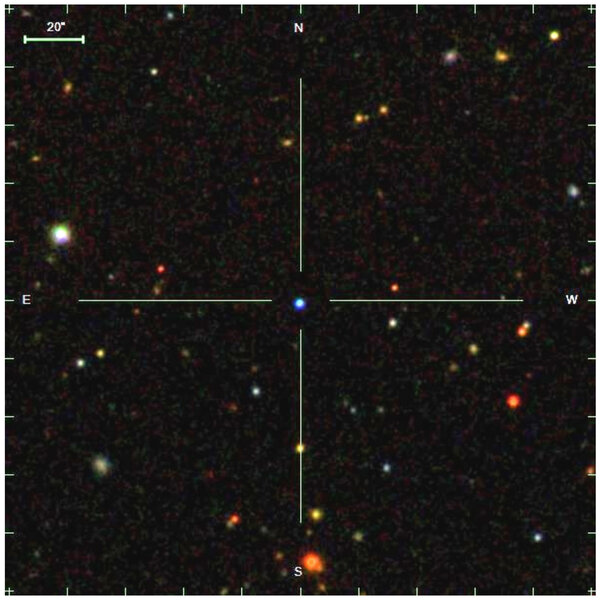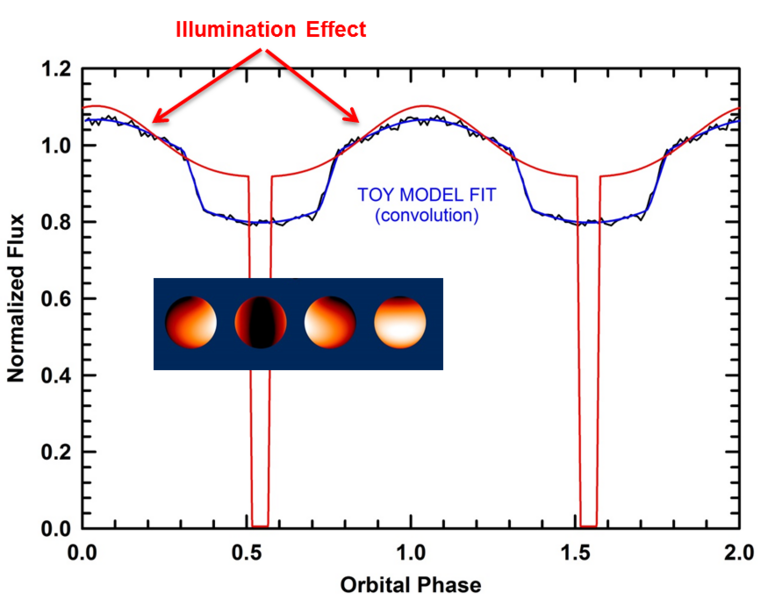Create a free profile to get unlimited access to exclusive videos, sweepstakes, and more!
WD 1202 is a weird binary: One of the stars used to be inside the other one!

Astronomers have just announced the discovery of a pretty unusual binary system: A white dwarf and a brown dwarf orbiting each other. That's pretty rare, so as cool as that is — and I'll explain why in a sec — even better is how ridiculously close together they orbit: They're separated by a mere 310,000 kilometers, closer than the Moon is to the Earth! And that means they move around each other fast: The intense gravity of the white dwarf tosses the brown dwarf around it at a speed in excess of 100 kilometers per second. That's rapid enough that they make a complete pass around each other every 71 minutes! Yes, minutes.
Yegads.
There are a few really nifty things about this system, so let's take a closer look. But not too close, because you'll get fried. Let me explain.
First, the white dwarf: It's called WD 1202-024, and it was first discovered in a survey of the sky in 2006. At 2700 light-years from Earth, it's pretty faint; the faintest star you can see with your naked eye is 150,000 times brighter!
Like all white dwarfs, it's the remains of a star that was once much like the Sun but ran out of usable hydrogen fuel in its core. It takes billions of years for a star to get to that point, but in this case WD 1202 reached this stage not too long ago, just 50 million years or so in the past. Normally, when a star like that is all by its lonesome, it responds to losing its fuel by expanding its outer layers, swelling to enormous size and cooling down. We call that a red giant. Over time, the outer layers of the star get blown away, exposing the hot core to space. This core is small (around the size of the Earth) and terribly hot, shining a painful white. That's a white dwarf (and you can find out lots more about them in my episode of Crash Course Astronomy about them).
But WD 1202 is different. In this new study, the astronomers discovered it's a variable star, changing its brightness in regular, predictable cycles that take a little over an hour. It slowly and subtly brightens and dims, and then, for a few minutes each cycle, the light from the star drops precipitously. That's pretty unusual behavior for a white dwarf, and the astronomers quickly figured out what's going: WD 1202 isn't all by its lonesome. It has a companion: a brown dwarf.
Although the names are similar, they couldn't be more different. Brown dwarfs are objects that are too massive to be planets, but not massive enough to ignite fusion in their cores and become proper stars*. In this case, WD 1202's brown dwarf companion has a mass of about 6.6% of the Sun, which is definitely too low for fusion. It's about 67 times Jupiter's mass, so it's way beefier than a planet, too.
Even though it's far more massive than Jupiter, it's not much bigger (brown dwarfs are weird that way; their cores are very dense and take on odd properties, such that as you add mass to them they actually shrink). But it's still much larger than WD 1202, probably 4 or 5 times wider.
And that's why the brightness of the system changes. Get this: The subtle variations are caused by the brown dwarf itself as it goes around the smaller dwarf. We're seeing its phases!
[The WD 1202-024 light curve is caused by the phases we see of the brown dwarf orbiting the white dwarf, plus a bonus eclipse. Credit: Rappaport, et al. / Bishop's University]
This is just like the Moon, where we see it go through its phase of new (when we only see the dark half), first quarter, full (when we see it fully lit by the Sun), then last quarter, then new again.
But in the case of the brown dwarf we're seeing phases, not because it's reflecting light from WD 1202, but because it's heated to incandescence by it!
The white dwarf is small, but it's furiously hot, about 22,400° C. The side of the brown dwarf facing the white dwarf is heated to glowing. When it's on the other side of the WD 1202 from us we see it full. A quarter of an orbit (about 69 minutes) later it's half full, then another quarter of an orbit after that the unlit side is facing us, so the system is dimmer. After that we start to see the lit side again until it's full, and the cycle repeats.
But there's more. Because the brown dwarf is so much bigger, when it's "new" it actually gets in the way of the white dwarf and blocks its light from us. That's why the brightness drops so much every 71 minutes!
I love just this part of the story. That brown dwarf is far too faint and close to WD 1202 to see it separately, but we can infer its existence because of its phases even though it's 27 quadrillion kilometers away. How about that?
But there's more, and it's also wondrous. Get this: The brown dwarf was, for quite some time, literally inside WD 1202!
Let's rewind the clock back to when WD 1202 was a regular star, about to run out of hydrogen fuel in its core. Back then, the brown dwarf was farther out, probably something like 50 million kilometers out (or half the distance from the Earth to the Sun), well separated.
But then WD 1202 expanded into a red giant. These kinds of stars get really big, easily spanning a hundred million kilometers across, sometimes more than twice that. That's bigger than the orbital distance of the brown dwarf, so when the primary expanded, it engulfed the brown dwarf.
Yet it persisted. That's because when it expands, the density of the gas in the red giant's outer layers dropped hugely. The lower density is what saved the brown dwarf from destruction. It would've been heated a lot by the star around it, and the drag from plowing through the material would have shrunk its orbit. As it got closer it would have orbited faster than the red giant rotated, too, so the companion acted like an egg beater, stirring up the primary's outer layers.
That can give the gas so much energy that they are expelled even more rapidly. When this violent period in the binary's life was over, what was left was the white dwarf with the companion brown dwarf in its tight orbit. Judging from what we know about the physics of such events, and the temperature of the white dwarf (they cool over time, giving us a measure of their age), this happened about 50 million years ago.
That's seriously cool. And yet there's one more thing.
The gravity of the white dwarf is impressive. When you squeeze half the mass of the Sun into a ball about twice the size of the Earth, it's phenomenally dense. The surface gravity is tens of thousands times stronger than Earth's. If you stood on its surface, you'd weigh thousands of tons. Oof.
As it happens, the brown dwarf is orbiting so close to WD 1202 that its gravity is felt very strongly indeed. Over time, even now, the brown dwarf is slowly spiraling in, getting closer to the white dwarf as they emit gravitational radiation (for more about that, read this article about gravitational waves). The astronomers who observed the system calculate that in about 250 million years, the brown dwarf will get so close to the primary that the white dwarf's gravity will start to draw material off the companion!
This material will pile up on the white dwarf and get squeezed excruciatingly hard by the intense gravity. When there's enough, it will undergo sudden and catastrophic hydrogen fusion, exploding literally like a thermonuclear bomb. This explosion is very energetic, and the system will dramatically flare in brightness. Then it will fade as the material blown off cools and blows away … and then the cycle will start again.
This kind of object is called a cataclysmic variable, or CV, and we know of quite a few. We also know of a few pre-CV systems, but this one has the shortest period of any known, which means it's the closest we know of that will become a proper CV in the future.
So, as amazing as this system's history is, and is now, its future will still hold plenty of wonder. As long as you stand a bit back from it. Cataclysmic variables are given that name for a very good reason.
This is one of those science stories where I dig every piece of it. It's got quite a bit of the stuff I love: stellar evolution, weird objects, cool geometry, and it ends quite literally with a bang.
The Universe is a pretty interesting and astonishing place, if you look at it carefully enough.
*Some people call them "failed stars", which is a term I don't like, for two reasons: They aren't stars at all, they're their own class of object; and why call them that when you could be more positive and call them really overachieving planets?
[N.B.: In the title of this post, I refer to the brown dwarf as a star. As I describe in the text, technically it isn't. But in a title I have to be brief, and if I said, "... one of the components..." it would read oddly, and distract from the main point. I struggled with this, to be honest, trying to figure out a good way to say this while still being accurate. It was surprisingly difficult (note that I never refer to this as a "binary star" in the text, but instead call it a system or a binary system). Being scrupulously accurate in terminology can make things harder on the reader sometimes, and in this case I decided to ease up on the pedantry to allow an easier understanding. If you agree or disagree, I'd be curious to hear your opinion. There's probably an interesting article all by istelf on this topic!]




























